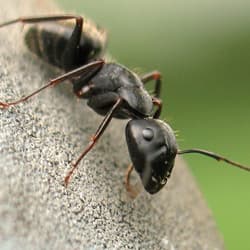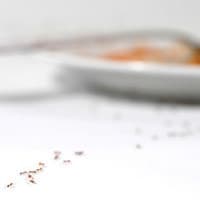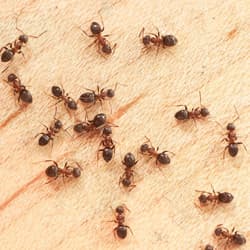When you think of the term carpenter ant, what do you picture? Do you see a little ant, wearing his little yellow hard hat, sporting little steel-toed boots, and carrying a little toolbox with his tool belt around his waist? Wouldn’t it be nice if this were the case? Perhaps if you had a repair to be made around the house you could send a bunch of these little Mr. Fix-Its on their way to do your bidding; kind of like elves.
The problem is, these ants aren’t really builders or fixers of any kind. They are destroyers. In fact, they really ought to be renamed destructor ants. That would certainly be more appropriate since they burrow into wood and weaken the structure of your home. Yes, these are a pest we all need to take seriously, because if left to their own devices, they can do some pretty serious damage over time.
What do carpenter ants look like?
Carpenter ants are among the largest ants in the world, but the size of these ants within their colony varies. Adults are anywhere from 6 to 12 mm in length. Some males and winged swarmers can be as large as 18 mm, and the queens are around 20 mm. They are typically black but can have a reddish tint. And, the thorax of these ants is evenly rounded.
What do carpenter ants eat?
You may be tempted to think that carpenter ants eat wood like termites do, but this is not the case. These ants actually feed on sources of protein and sugar, such as dead insects, honeydew, meats and pet food. They do most of their foraging for food at night, between sunset and midnight during spring and summer. Sometimes worker ants travel up to 100 yards away from their nest in search of food. It is typical during this time when carpenter ants find their way into homes.
So what do carpenter ants have to do with wood?
Carpenter ants create tunnels and nests inside of wood. This can be either outside, such as in a log or tree stump, or inside, such as inside your walls or under roofing. And it’s most common for homeowners to find carpenter ants inside during the spring. If you find these ants in your home during late winter or early spring, this suggests that they are coming from a nest that is already inside your walls. And if you see piles of wood shavings underneath wooden items, then you should be appropriately concerned.
What can you do if you find these “destructor ants” or evidence of them, inside your home?
If you have seen these ants or evidence of them, it is a best to contact a professional pest control company as soon as possible. If left untreated, these little home wreckers can do quite a bit of damage both to outdoor wooden structures as well as the wood in your house. Here at Russell’s Pest Control, we have decades of experience dealing with carpenter ants, and a whole host of other household pests. And unlike those “carpenter” ants that do not live up to their name, our expert pest control technicians certainly will. You can count on it.


